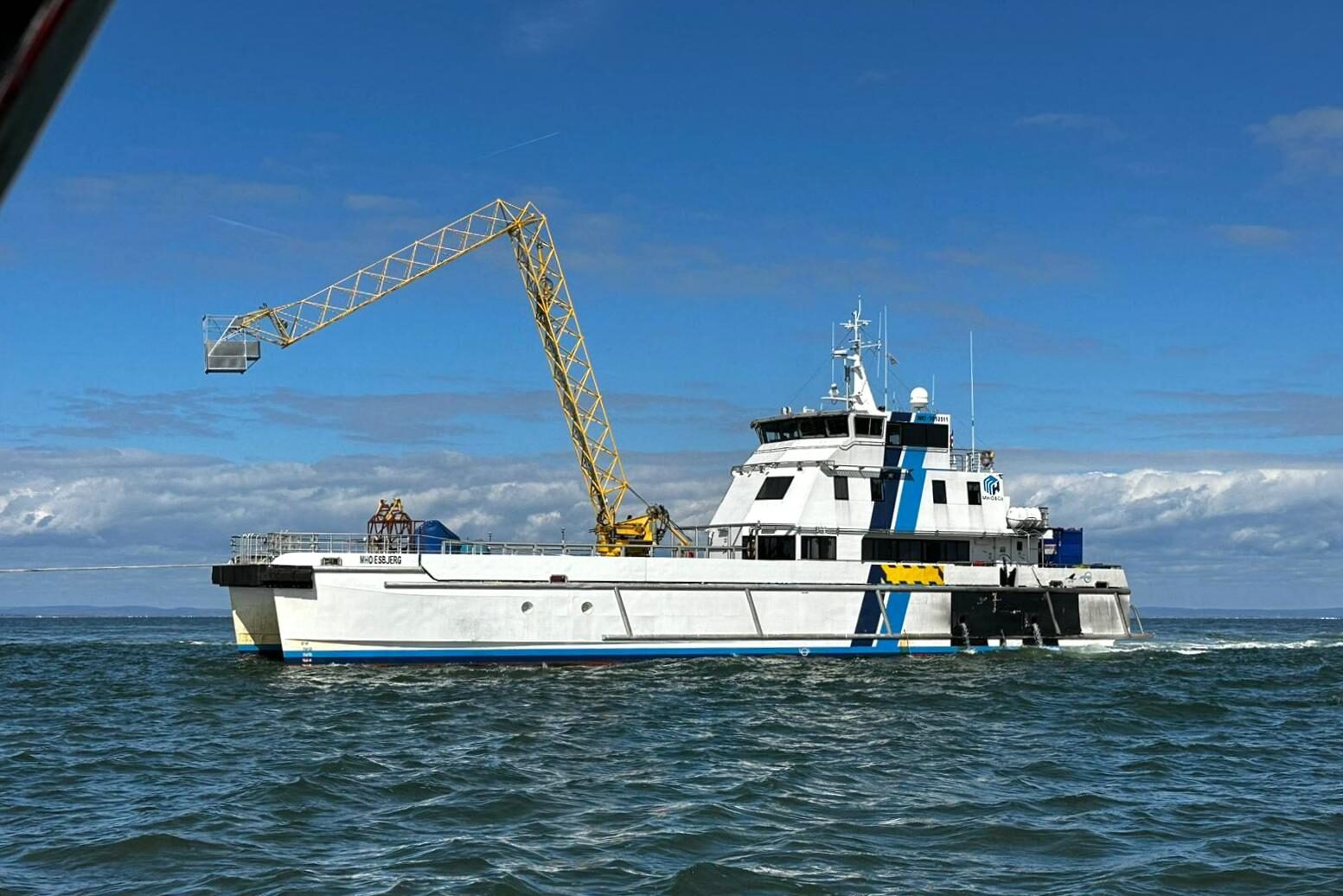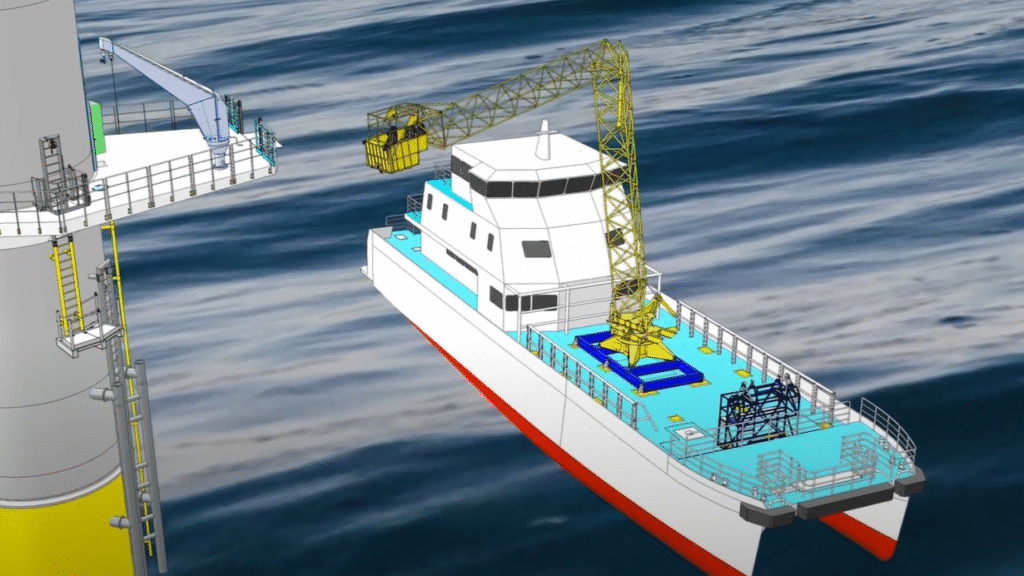STL Research are pleased to announce the posting of a simulation of the Neptune 20M Offshore Personnel Access System (PAS) on their YouTube channel.
The simulation is intended as an educational/training tool and shows the Neptune PAS installed on a 38m Fast Crew Transfer Vessel (FCTV).
A video of the simulation can be viewed by clicking on the image below.
The simulation shows the Neptune System compensating for a 2m high wave with a period of 6 seconds. The wave direction is 45 degrees from the vessel centreline (bow quartering). The transfer height shown is in excess of 17m from the water level, and the vessel stand-off is 11m from the transfer platform edge.
The photograph below shows the Neptune System during sea trials that were carried out using the 38m FCTV that is modelled in the simulation.

The actual vessel size and design, along with the proposed installation location of the Neptune PAS will influence the operating envelope, and indeed, STL Research are currently working with a number of vessel builders and operators to create vessel specific simulations. The simulations help to determine the worst case sea conditions that can be accommodated and have shown that the Neptune System could successfully operate at significant wave heights approaching 2.5mHs, even on small SOVs.
For more information on the Neptune System, please visit our website (www.stlres.co) or contact our Business Development Manager, Phil Vosper, directly (phil@stlres.co or +44(0)7836 681749).

